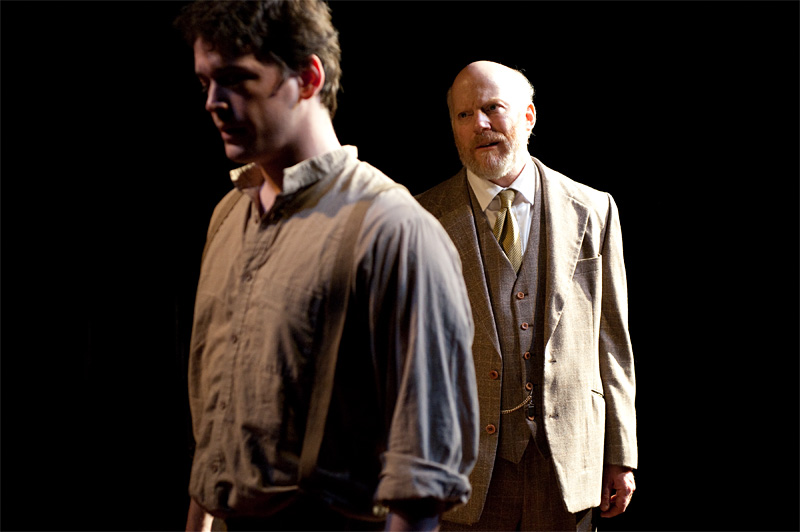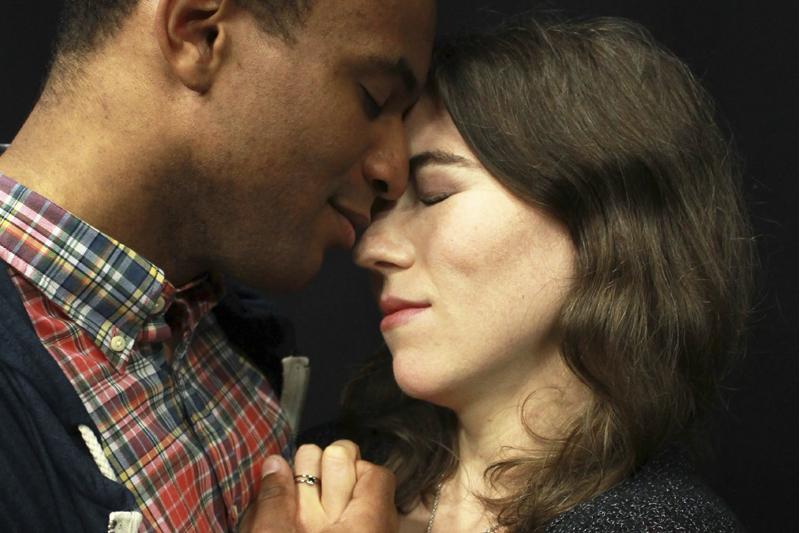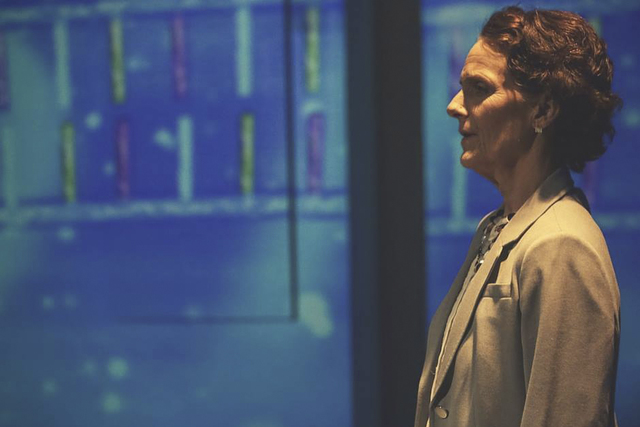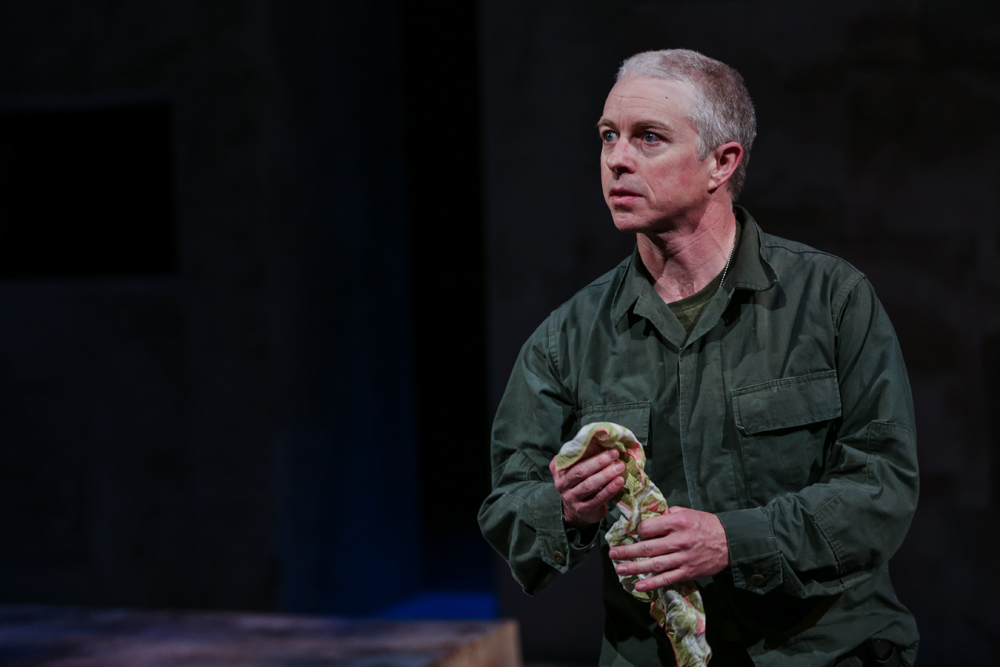You hope for at least a handful of crystalline, memorable scenes in a play—but what to do when they come so fast and furiously that it’s odd when something noteworthy isn’t happening? It’s a wonderful problem to have. Book-It Repertory Theatre turns 20 this year, and it’s celebrating with a pared-down, amped-up version of the first novel adapted in Book-It style—Peter Parnell’s version of John Irving’s 1985 The Cider House Rules, which premiered here in 1996. The tightly plotted Part 1 whips through the early years of Homer Wells (the irresistible Connor Toms). Like the fellow foundlings he reads about (Dickens’ Pip and David Copperfield), he finds food and shelter easier to obtain than anything even remotely resembling parental love. The play also swiftly and directly tackles the book’s thematic core—what orphanage director Dr. Wilbur Larch (Peter Crook) calls “the great ambiguity in the feelings people had for children.” The masterful portrayal of that ambiguity—of reluctant mothers, inadequate surrogates, and rootless children by 18 exuberant actors in 42 roles, dynamically staged by director Jane Jones—is nothing short of spellbinding.
Images of literal and metaphorical birth abound, not only in the dejected women who come to make a (human) deposit at Larch’s Maine clinic, but also in the shedding of each stage of Homer’s life. (His own birth is depicted by Toms springing fully grown from between his anonymous mother’s legs.) As tales of Homer’s and Larch’s lives are enacted in tandem, younger and older versions of the characters simultaneously attend the scenes, conflating present action and memory. After Homer’s three amusingly failed adoptions (the most indelible of which involves a frisky couple and a freak log drive), Larch permits him back to the orphanage to “be of use.” Falling under the influence of hilariously destructive foundling Melony (Terri Weagant), Homer is soon delivered into adolescence, sex, and—what Larch most dreads—deceit. As Homer follows Larch’s profession, we witness the birth of his intellect, his medical skills, and finally his conscience. Andrew Smith’s dramatic lighting of these scenes recalls Thomas Eakins’ paintings of early “theaters of operation.”
The most poignant scene comes when Larch returns to find Homer, exhausted after a marathon maternity shift, sleeping in a fetal curl. He’s become the better, more responsible physician, which Larch isn’t emotionally capable of acknowledging. Instead, he approaches tenderly and bends down to sniff sleeping Homer, the way an animal might smell its own. The moment, rich and long, brought down the house.
In print, Cider House is sometimes called an “abortion novel,” and Larch and Homer debate—long before Roe v. Wade—whether that practice is the Lord’s or the Devil’s work. And more, how do unwanted children compensate for the cosmic-scale vacuum of absent parents? Is a human being constituted over the course of its lived experiences, as Larch believes, or does it exist ipso facto from conception? Wisely, the production asks everything and answers nothing. (Though that may also be a cliff-hanger strategy: Part 2 begins Sept. 15.)
In the meantime, this half of Cider House moves briskly from the 1890s to the early 1940s. The temporal cues come from Pete Rush’s smartly distinct period costumes, while props and sets are minimal and undistracting. The focus is on the text, where Irving’s amiability shines through. Orphanages and abortion sound grim, but there are plenty of penis jokes and humor. (Joe Feeney is a delight, all eyes and teeth, as the entrepreneurial orphan Curly, who seeks desperately to be adopted.)
And this production makes Irving’s novel timely again: Abortion rights are more restricted now than during the post-Roe ’70s. Even as today’s Hollywood moms fly to Africa to adopt, American kids in foster care crave stable homes. We’re a long way from the hardships of St. Cloud, Maine, and not very far at all.








